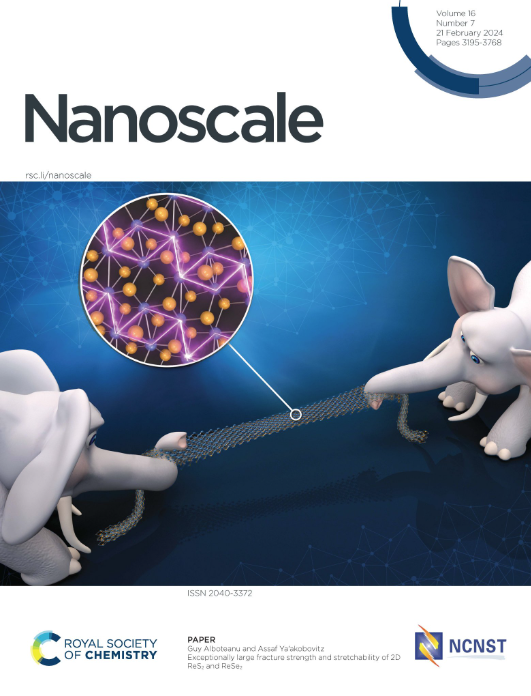Synthesis and Electronic Structure of Atomically Thin 2H-MoTe2
IF 5.8
3区 材料科学
Q1 CHEMISTRY, MULTIDISCIPLINARY
引用次数: 0
Abstract
An in-depth understanding of the electronic structure of 2H-MoTe2 at the atomic layer limit is a crucial step towards its exploitation in nanoscale devices. Here, we show that millimeter-sized monolayer (ML) MoTe2 samples, as well as smaller sized bilayer (BL) samples, can be obtained using the mechanical exfoliation technique. The electronic structure of these materials is investigated by Angle-Resolved Photoemission Spectroscopy (ARPES) for the first time and Density Functional Theory (DFT) calculations. The comparison between experiments and theory allows us to describe ML MoTe2 as a semiconductor with direct gap at K point. This scenario is reinforced by the experimental observation of the conduction band minimum at K in Rb-doped ML MoTe2 , resulting in a gap of at least 0.924 eV. In the BL MoTe2 system the maxima of the bands at Γ and K display very similar energies, thus leaving the door open to a direct gap scenario, in analogy to WSe2 . The monotonic increase in the separation between spin-split bands at K while moving from ML to BL and bulk-like MoTe2 is attributed to interlayer coupling. Our findings can be considered as a reference to understand Quantum Anomalous and Fractional Quantum Anomalous Hall Effects recently discovered in ML and BL MoTe2 based moiré heterostructures.深入了解原子层极限的 2H-MoTe2 电子结构是将其应用于纳米级器件的关键一步。在这里,我们展示了利用机械剥离技术可以获得毫米级的单层(ML)MoTe2 样品以及更小尺寸的双层(BL)样品。这些材料的电子结构首次通过角度分辨光发射光谱(ARPES)和密度泛函理论(DFT)计算进行了研究。通过实验与理论之间的比较,我们将 ML MoTe2 描述为一种在 K 点具有直接间隙的半导体。在掺镱的 ML MoTe2 中,实验观察到导带在 K 点达到最小值,从而产生了至少 0.924 eV 的间隙,这进一步证实了上述观点。在 BL MoTe2 系统中,导带在 Γ 和 K 处的最大值显示出非常相似的能量,因此与 WSe2 类似,存在直接间隙的可能性。在从 ML 到 BL 和类块 MoTe2 的过程中,K 处自旋分裂带之间的分离单调增加,这归因于层间耦合。我们的研究结果可作为理解最近在基于 ML 和 BL MoTe2 的摩尔异质结构中发现的量子反常和分数量子反常霍尔效应的参考。
本文章由计算机程序翻译,如有差异,请以英文原文为准。
求助全文
约1分钟内获得全文
求助全文
来源期刊

Nanoscale
CHEMISTRY, MULTIDISCIPLINARY-NANOSCIENCE & NANOTECHNOLOGY
CiteScore
12.10
自引率
3.00%
发文量
1628
审稿时长
1.6 months
期刊介绍:
Nanoscale is a high-impact international journal, publishing high-quality research across nanoscience and nanotechnology. Nanoscale publishes a full mix of research articles on experimental and theoretical work, including reviews, communications, and full papers.Highly interdisciplinary, this journal appeals to scientists, researchers and professionals interested in nanoscience and nanotechnology, quantum materials and quantum technology, including the areas of physics, chemistry, biology, medicine, materials, energy/environment, information technology, detection science, healthcare and drug discovery, and electronics.
 求助内容:
求助内容: 应助结果提醒方式:
应助结果提醒方式:


